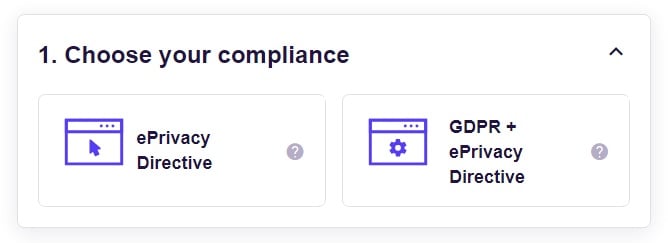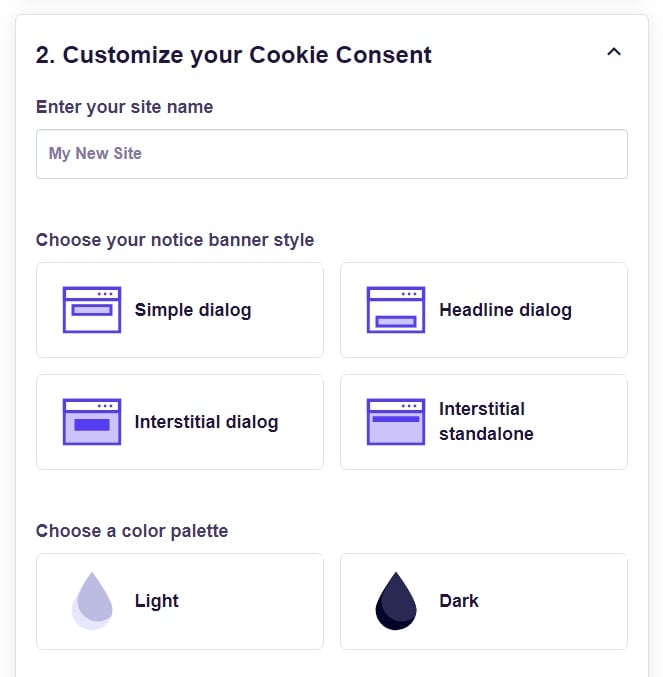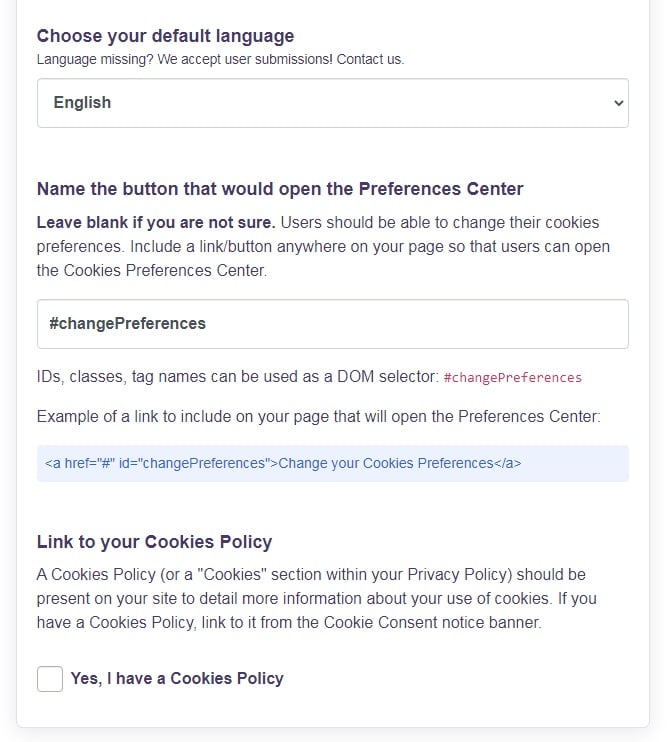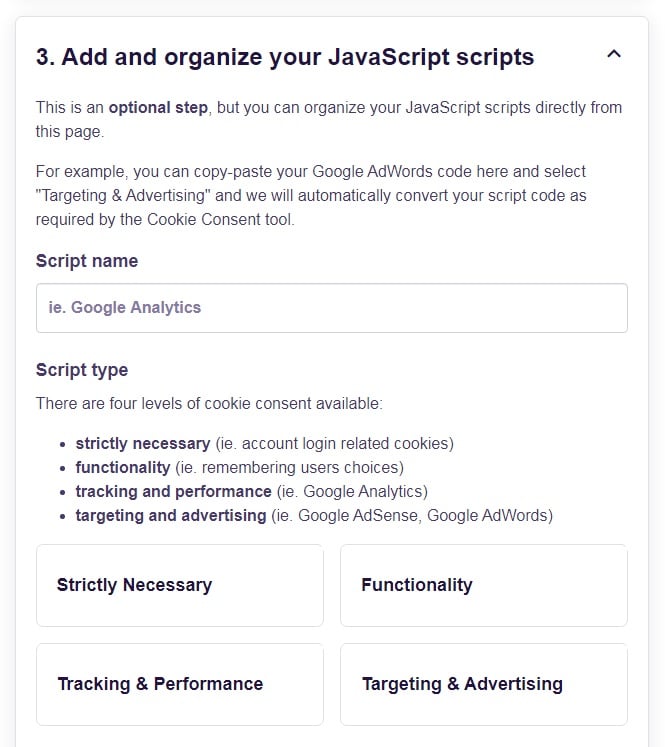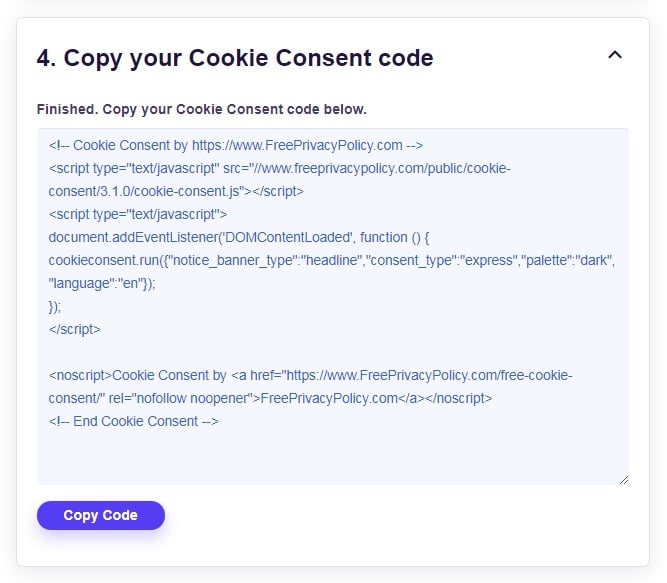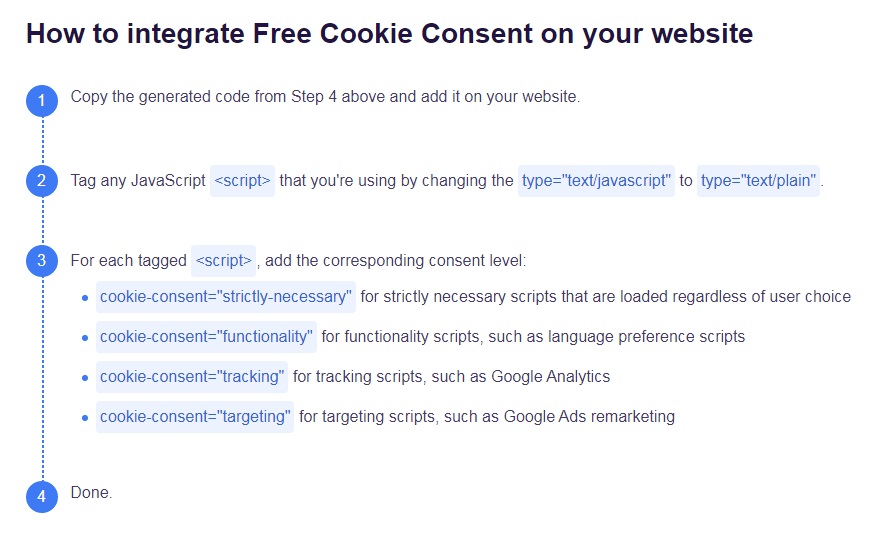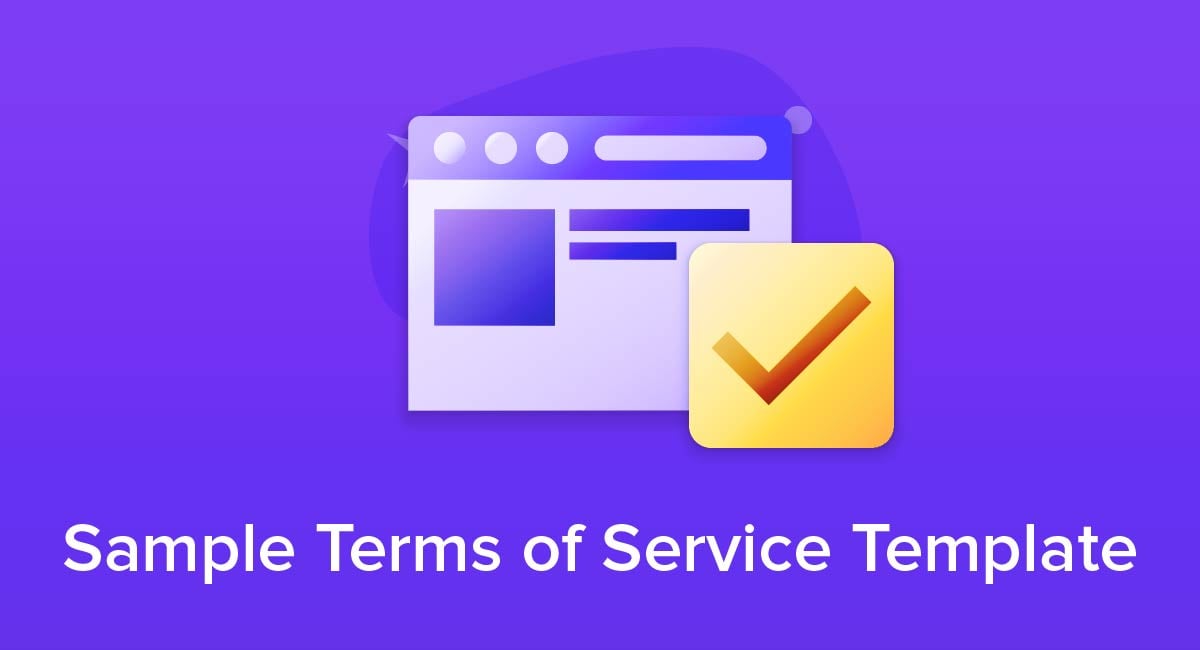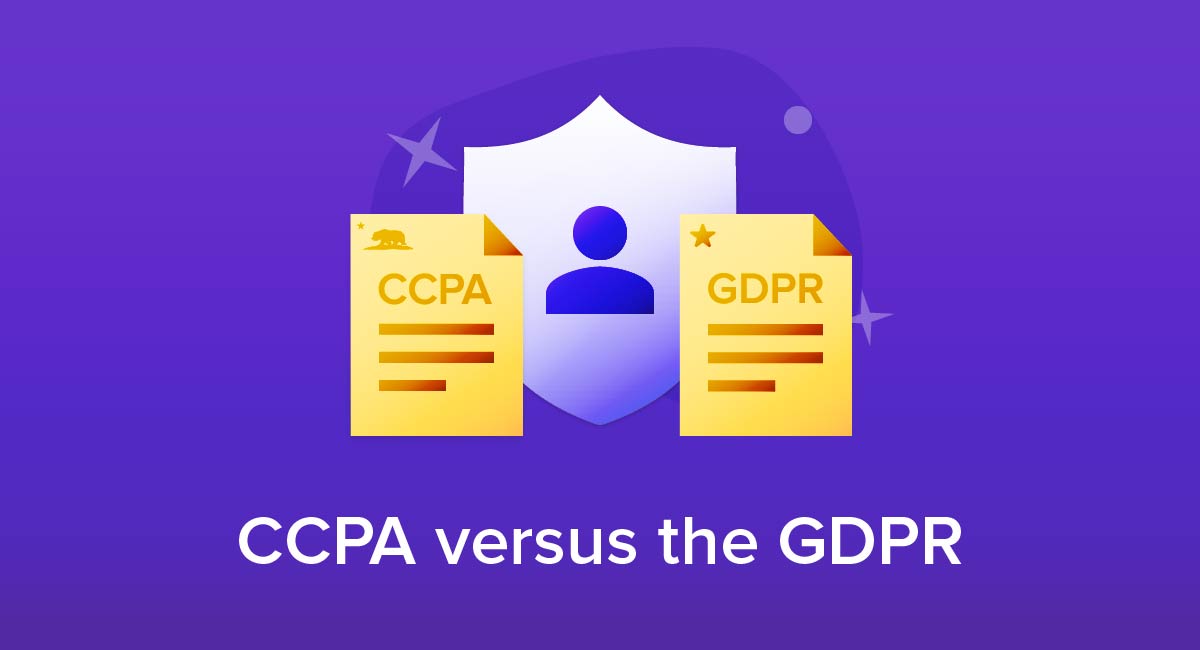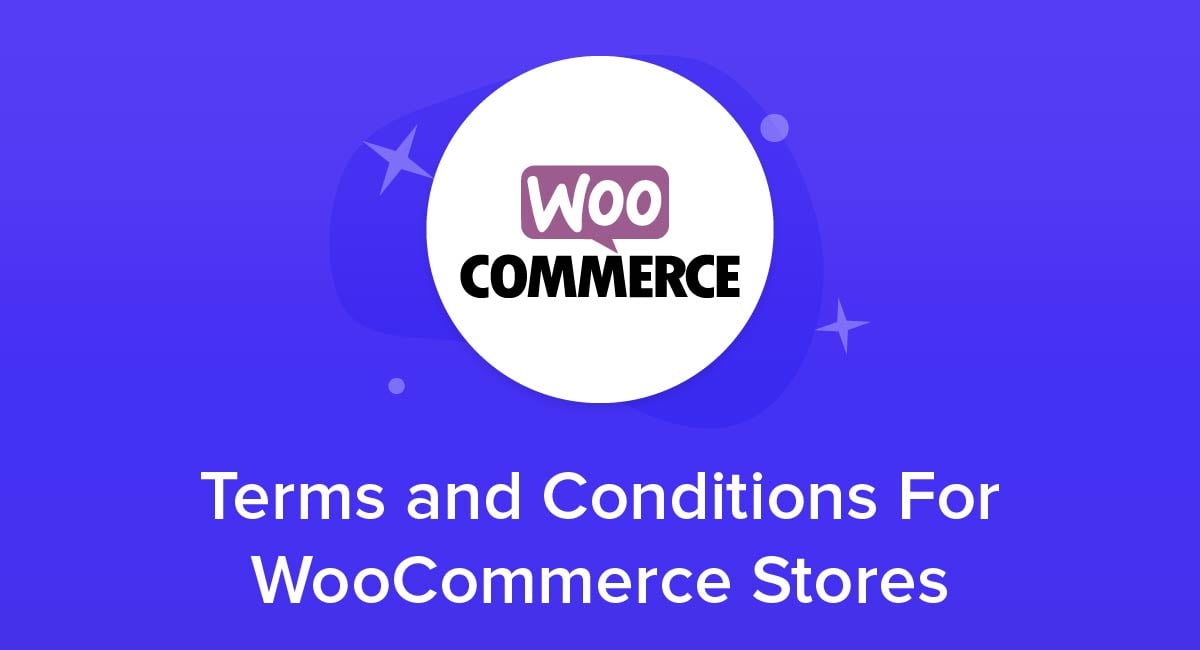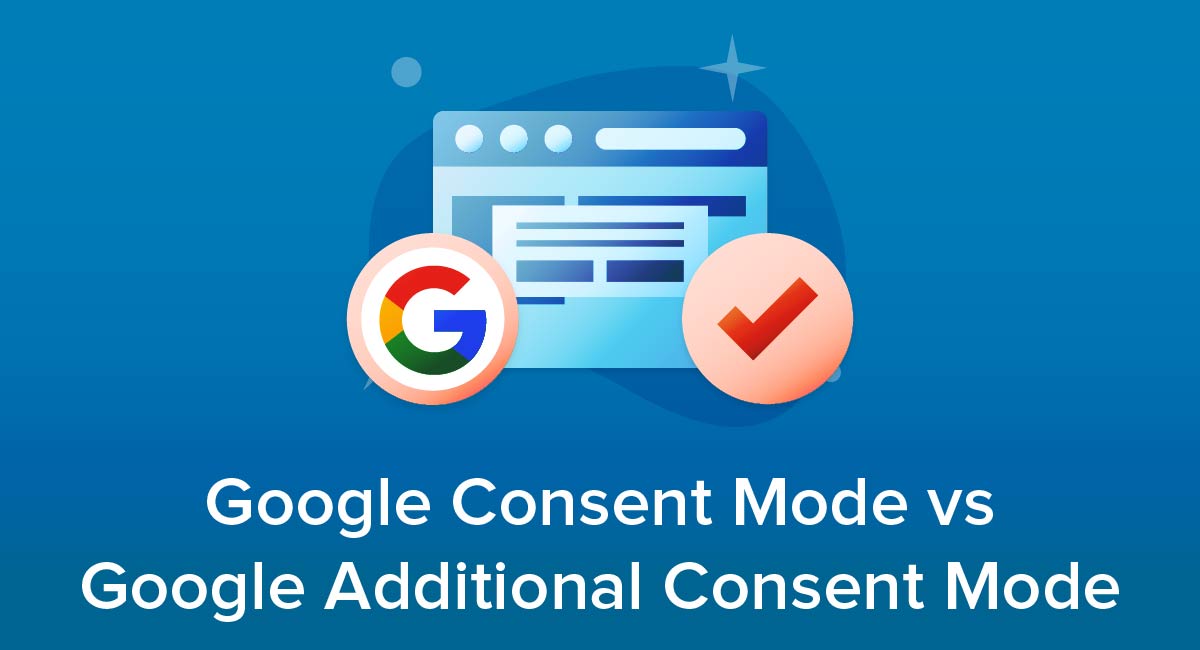
Though they sound similar, Google Consent Mode and Google Additional Consent Mode are two different technologies. Both consent modes can be implemented through a Consent Management Platform (CMP) that supports them, but their purpose and functionality are unique.
The primary goal of these consent modes is to make it easy for websites to remain compliant with EU Privacy laws like the GDPR and ePrivacy Directive when it comes to data collection of consumers without compromising the functionality of Google Services.
Let's look at what Google Consent Mode and Additional Consent Mode are, how they're similar and different from each other, and whether you should enable them on your website or not.
- 1. What is Google Consent Mode?
- 2. Why Was Google Consent Mode Needed?
- 3. Who Should Use Google Consent Mode?
- 4. What's New in Google Consent Mode v2?
- 5. How Do Basic Consent Mode and Advanced Consent Mode Differ?
- 6. What Do You Need to Enable Google Consent Mode?
- 7. What is Google Additional Consent?
- 7.1. What's IAB Europe's TCF?
- 8. Who Should Use Google Additional Consent?
- 9. What are the Differences Between Google Consent Mode and Google Additional Consent?
- 10. What are the Similarities Between Google Consent Mode and Google Additional Consent?
- 11. Summary
What is Google Consent Mode?
Google Consent Mode is a feature available either through a direct implementation (i.e. your own consent notice banner) or through certain CMPs that, when turned on, informs Google about the user's consent regarding the collection of their data and modifies or blocks how Google tags behave for that user.
Additionally, if allowed, Google Consent mode can also collect aggregate data to fill in the gaps from non-consenting users, allowing for more realistic analytics and better ad personalization.
Why Was Google Consent Mode Needed?
After the GDPR was implemented in 2018, companies had to be open with consumers regarding the cookies they use and ask for permission before enabling them. However, when given the option, most users opted to decline consent to use cookies.
This led to a significant drop in ad conversions as they weren't personalized to every user, and also impacted website analytics.
So in 2020, Google released Consent Mode as a solution to these problems, which was updated to v2, adding 2 new signals and a Basic Consent mode.
Who Should Use Google Consent Mode?
Anyone who uses Google services like Floodlight and Analytics on their website and collects data from European users must use the Basic Consent Mode at the very least.
The deadline for enabling Google Consent Mode passed in March 2024, and websites that hadn't turned it on by then might face issues when using Google services on their website. Fortunately, you can still enable it if you have a GCM-compliant CSM.
This is in line with Google's attempts to strengthen its EU User Consent Policy, making it more compliant with the GDPR and ePrivacy Directive.
The Advanced Consent Mode is completely optional, but enabling it can provide you with analytical data from users who refuse cookie consent. It can also help push more personalized advertisements and bring more revenue than general ads.
What's New in Google Consent Mode v2?

Previously, Google Consent Mode used only 2 consent types or signals. With Consent Mode v2, these were increased to 4 with the addition of 2 new signals, "ad_user_data" and "ad_personalization."

With v2, the functionality of Google Consent mode was divided into two modes, Basic and Advanced.
How Do Basic Consent Mode and Advanced Consent Mode Differ?

In March of 2024, Google made it mandatory for any website operating in Europe to enable the Basic Consent Mode if it wanted to use Google services, whereas the Advanced Consent Mode is entirely optional.
The Basic Consent Mode simply communicates a user's consent status with Google. Unless a user provides consent, Google tags and scripts are blocked and no user data is collected.
This means that Google Analytics and personalized ads aren't provided for users who refused consent, as these services require consent from users to function. However, enabling the Basic Consent Mode maintains compliance with privacy laws.
With the Advanced Consent Mode enabled, even if a user doesn't consent to the use of cookies and collection of their data, Google Consent Mode allows the website to send "cookieless pings" that contain unidentifiable data regarding the user.
This data enables the use of Google Analytics and is used to push ads that are more personalized, increasing revenues while staying compliant with privacy laws.
Here's a step-by-step of how Advanced Consent Mode works:
- A user visits a website where they're asked to accept or decline cookies
- The user gives or refuses consent, which is recorded and transmitted to Google
- If the user allows cookies, the website can collect their personal data, and Google Tags and scripts function normally
- If the user denies cookies, their data is collected in an aggregated form using cookieless pings
The aggregate data collected includes the following non-identifiable information:
- Country
- Time of day
- Consent and conversion status
- Browser type
- Device type
Google provides a detailed comparison between the basic and advanced versions of Consent Mode:
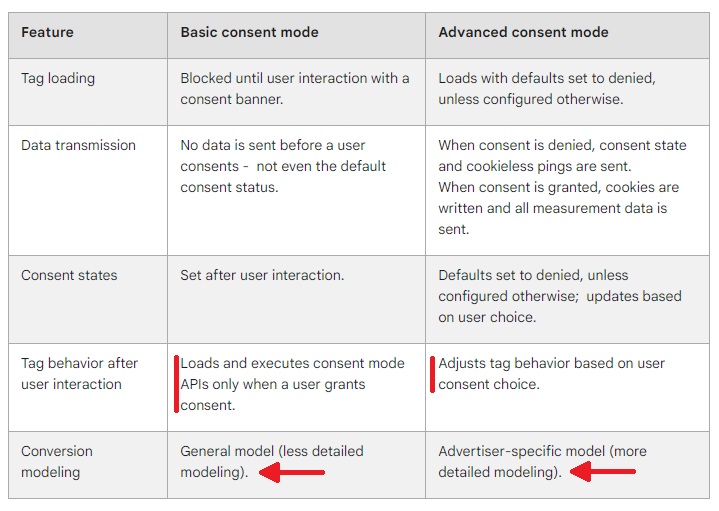
What Do You Need to Enable Google Consent Mode?
It's important to note that Google Consent Mode is not a Consent Management Platform. The mode works alongside a website's existing CMP (Consent Management Platform) to enable or disable Google tags depending on the user's consent choice.
Before enabling Google Consent Mode, you can use a Google CMP Partner that supports this feature. A CMP is the software that manages your website's cookie consent banner while staying compliant and up-to-date with the newest laws.
Alternatively, you can integrate Google Consent Mode using your own implementation with JavaScript through your own consent notice banner.
Here's an example of a cookie consent banner:
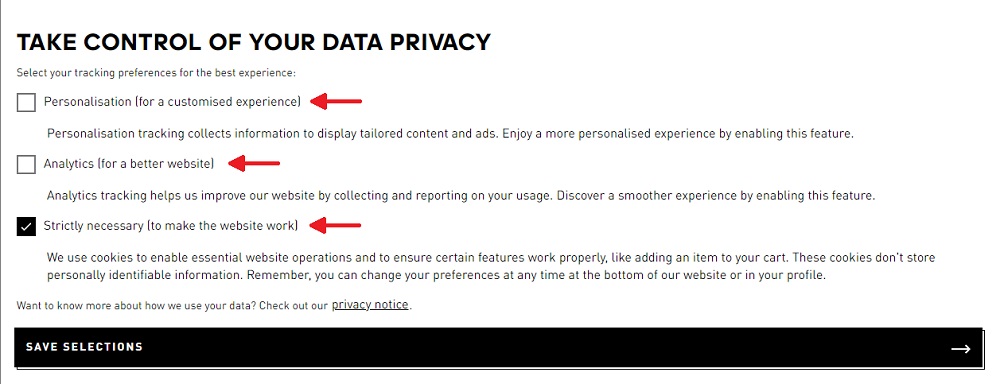
What is Google Additional Consent?

Google Additional Consent is a technical specification that websites can use to get consent from Google's ad tech providers that are not a part of IAB Europe's Transparency and Consent Framework, or TCF.
The TCF contains an "Additional Consent," or AC string which contains information regarding Google ATPs and works to supplement the existing "Transparency and Consent," or TC string.

Enabling Additional Consent significantly broadens the list of ad vendors available to TCF-compliant websites, which can potentially increase ad revenue.
It's important to note that website owners, also referred to as "publishers" by IAB, aren't allowed to create this string. This task is handled by a CMP that's registered with IAB Europe's TCF.
What's IAB Europe's TCF?
The Interactive Advertising Bureau (IAB) Europe is an international business organization that contains publishers, advertisers, vendors, and CMPs. In light of GDPR, these entities collectively came up with the Transparency and Consent Framework, or TCF.
Since the TCF was developed through a collective effort of all these parties, its guidelines aim to remain unbiased towards any single party and help them comply with the GDPR and ePrivacy Directive by balancing data privacy and the level of functionality of websites.
The TCF is constantly being updated and is currently on its v2.2 version. Google is also a part of this framework and is actively pushing other ad vendors to register with it and become a part of IAB Europe's Global Vendor List.
Being TCF v2.2 compliant as a publisher is as simple as using a TCF-compliant CMP and enabling TCF v2.2 in the consent banner settings.
Who Should Use Google Additional Consent?
If your website is compliant with the TCF v2.2, you can work with Google's TCF-compliant ad tech providers. However, not all Google ATPs are registered with IAB Europe and follow their TCF framework.
If you want to work with these ATPs and ask for their consent, you'll need to use Google Additional Consent. Doing so can potentially help increase revenue - especially in regions where most ad tech vendors aren't registered with the TCF - without breaching the consumer's privacy.
Additionally, since a publisher is required to comply with Google's EU User Consent Policy before they can work with non-TCF registered ATPs, enabling Additional Consent helps their website remain compliant with the GDPR and ePrivacy Directive.
What are the Differences Between Google Consent Mode and Google Additional Consent?

Google Consent Mode and Google Additional Consent are quite different in who they're intended for and how they function.
| Differences | Google Consent Mode | Google Additional Consent Mode |
|
Functioning The core function of both these technologies is vastly different. |
Google Consent Mode functions as a means to communicate a user's consent with Google, based on which it can modify or block the data collection from the user depending on their consent status. | Google Additional Consent is a specification that allows TCF v2.2 compliant publishers to obtain consent and work with non-TCF-registered ad vendors for better revenue. |
| Obligations | Google Consent Mode is mandatory for any Europe-based website that wishes to use Google services like Google Analytics (GA4) and Floodlight to remain compliant with privacy laws. | There is no such obligation for publishers to implement Google Additional Consent, which is reserved for a small number of websites that need consent from Google ATPs that aren't compliant with the TCF. |
|
Pre-requisites Both technologies require different prerequisites before a website can enable them. |
For Google Consent Mode, a website needs to already have a GDPR and ePrivacy Directive-compliant cookie consent notice in place. | Google Additional Consent requires a website to be compliant with the Transparency and Consent Framework v2.2 and Google's EU User Consent Policy before a publisher can enable it. To get compliant with TCF v2.2, publishers shall have to use a CMP that is TCF v2.2 compliant itself. |
What are the Similarities Between Google Consent Mode and Google Additional Consent?
While being fundamentally different from each other, they do share some similarities:
- The goal of both technologies is to help websites remain compliant with privacy laws, especially the GDPR and ePrivacy Directive.
- Implementation of both requires a consent management platform (CMP) in place that supports the respective technology
- Both work with Google Tags and scripts for implementation
- Both aim to enhance website functionality without breaching the scope of privacy laws
Summary
In the recent push to uphold consumer data privacy, Google released two technologies that aim to help websites that interact with European users to stay compliant with regional laws like the GDPR and ePrivacy Directive. These are Google Consent Mode and Google Additional Consent, which are fundamentally different, but they ultimately help publishers gain more revenue while remaining compliant with privacy laws.
Google Consent Mode is a feature that publishers can enable from a supported consent management platform (i.e. cookie consent notice banner). Consent Mode allows the website to communicate a user's consent status with Google and depending on the consent, allow or block Google tags.
It comes in two flavors:
- Basic Consent Mode is mandatory for every website that wishes to use Google services. This mode blocks Google tags and data collection for users who refused consent, ensuring compliance with privacy laws but potentially impacting analytics and ad personalization.
- Advanced Consent Mode is optional, and when enabled, it allows the website to send "cookieless pings." These contain aggregate data for users who denied consent which allows Google to fill in the gaps and enable some analytics and personalized ads.
On the other hand, Google Additional Consent is a specification for websites compliant with TCF v2.2 to allow them to work with Google's ad tech providers that aren't registered under the TCF. It leverages the existing TCF framework to capture "additional consent" for these non-TCF vendors, potentially increasing ad revenue for publishers.
It isn't mandatory and is only intended for the few publishers that need consent from a broader range of ATPs. Before implementation, Google Additional Consent requires the website to be compliant with Google's EU User Consent Policy and be registered with IAB Europe's TCF v2.2.
Both technologies are similar in their use of Google Tags for implementation and they focus on improving website functionality while helping them remain compliant with privacy laws.
